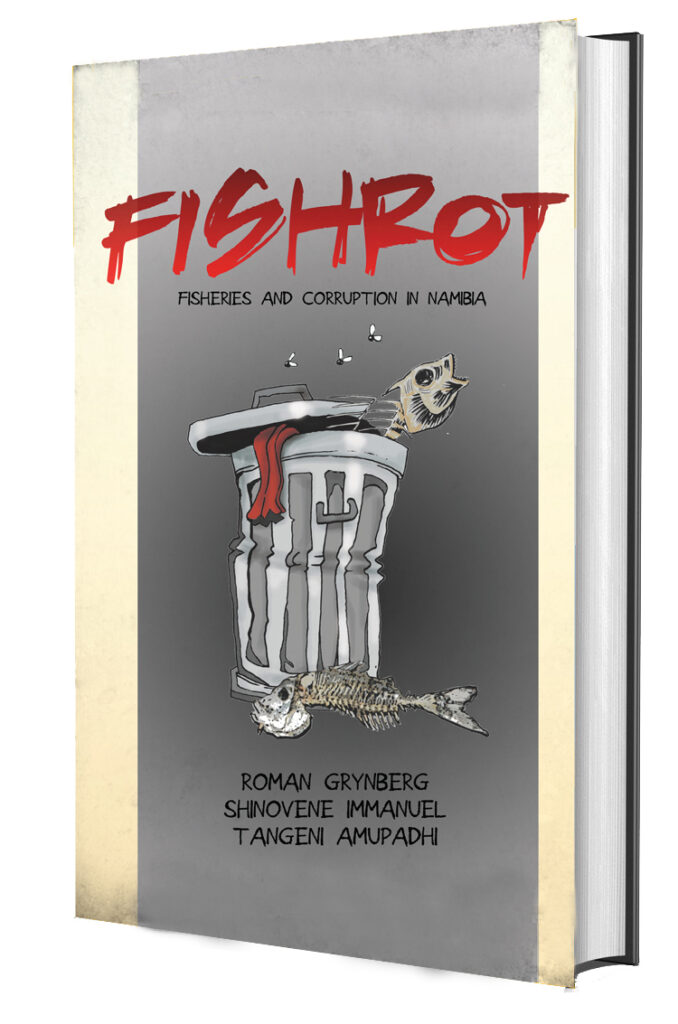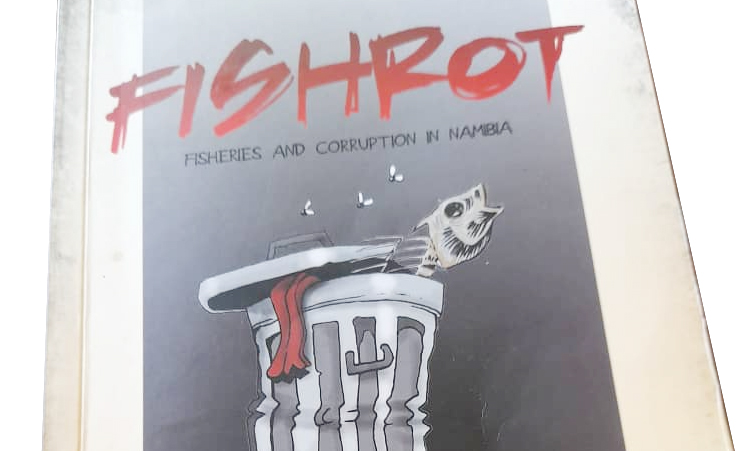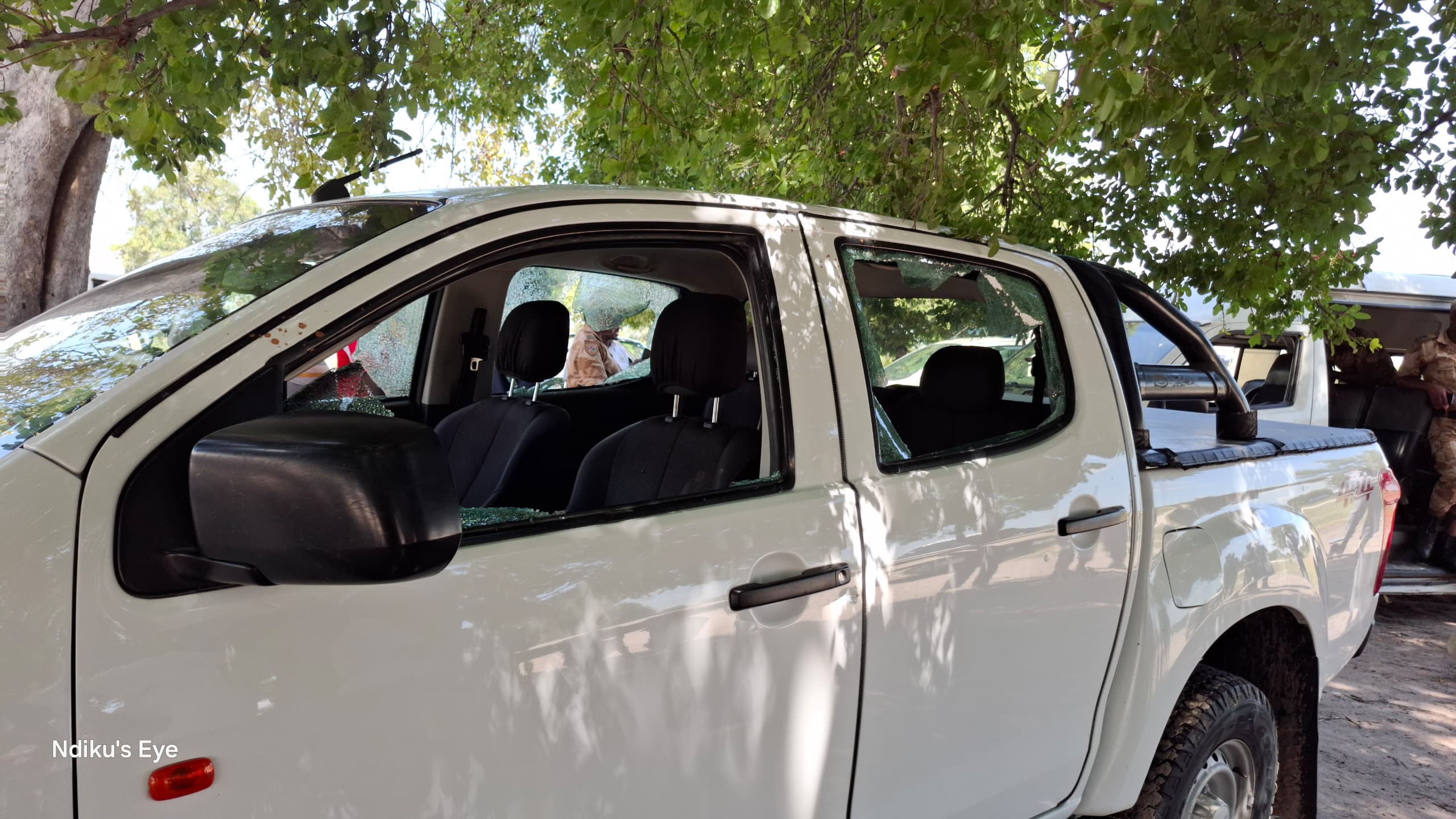‘Fishrot: Fisheries and Corruption in Namibia’ by Roman Grynberg, Shinovene Immanuel and Tangeni Amupadhi is a timely analysis of the Fishrot corruption scandal and its various socio-economic and legal/policy implications.
The book is written in an engaging, conversational style that is equally appropriate in academic and research settings as it is informative for the average Namibian, gripped by what has been described as the biggest corruption scandal in the history of the country.
‘Fishrot’ examines the sector in some detail, the authors warn, to benefit the study of fisheries policy and law, address sustainability concerns, as well as gain insight into illicit financial flows to guard against future corruption in extractive sectors.
Grynberg, Immanuel and Amupadhi, along with a team of researchers, spent over a year of “painstaking research” to bring us ‘Fishrot’.
The authors do not simply detail more corruption in Africa, as many others have done before, they go a step ahead in providing important data that can be used by scholars, researchers and policymakers.
The book provides interesting background information on ‘The Players’ in an incredibly enjoyable gossipy style, with juicy details provided by unnamed sources.
This section is indeed a “treasure trove” of facts, as narrated by political scientist Henning Melber in the foreword.
Things like rumours of N$9 million in cash found buried in a 25kg bag on land neighbouring that of James Hatuikulipi and Sacky Shanghala, and the two joining Marén de Klerk and Adriaan Louw at Cape Town’s “posh Shimmy Beach Club” to formulate the initial stages of the Fishrot scheme are mentioned.
Particulars on each of the Fishrot players, their family, education and career progression, provide some insight into the men and their motivations in what plays out like a movie.
If our film-makers are not already working on something, they should.
Certainly, descriptions of whistleblower Jóhannes Stefánsson being “threatened by Cape Town gangsters . . . deeply enmeshed in the illegal fishing industry”, and reportedly surviving a slow-acting poison attempt which still affects his health, plagued by seizures, collapsing and uncontrollable shaking, make for gripping reading.
As do Stefánsson’s assertions that his “Congolese bouncer” saved his life on several occasions.
Certainly damning is president Hage Geingob thanking Bernhard Esau and Shanghala for their “patriotism and contribution to the work of government” upon receiving their resignations.

GLOBAL CORRUPTION
The book provides important context of the global fisheries industry, rife with corruption and tax avoidance, with analysts estimating that Icelandic seafood giant Samherji sold N$2,1 billion worth of fish but reportedly only paid N$5 million in tax, a mere fraction of what Namibian companies are required to pay.
This has seen the country losing out on an approximate N$90 million in tax revenue between 2012 and 2017 from Samherji-linked companies.
At the same time Samherji opted to invest in Canada, the United States and Europe, and not Namibia, because “it does not wish to invest in African countries”.
The widespread perception in Iceland is that one must pay bribes in Africa to obtain fishing quotas and other benefits. So much so that the Icelandic finance minister had no qualms about discussing Africa’s weak and corrupt governments on television, the ‘Fishrot’ authors detail.
Quite ironic then that Iceland itself is considered to be the most corrupt of the Nordic countries, while colonial powers certainly enjoyed their fair share of pillaging Africa’s resources.
‘Fishrot’ details the plunder of Namibia’s exclusive economic zone by Russians, the Spanish and South Africans between 1960 and 1980, from which the country’s fisheries and biomass have never recovered, and for which Namibia received almost no compensation.
The slow and steady decline of various catches and species besides hake after independence is also detailed, as well as the fishing quota system – initially honourably tabled to empower Namibians, but which was hijacked by the political elite, with 22 members of the National Assembly being quota holders in 2018.
NO CHANGE
The authors sound the alarm on the fact that nothing has changed since Fishrot in terms of secrecy surrounding the awarding of quotas, and they call for a thorough commission of inquiry to unveil the full extent of corruption.
This appears highly unlikely, however, particularly with such “dramatic political implications” for Swapo and Geingob.
That two senior ministers have been arrested for corruption is virtually unheard of in Africa and may be testimony to the functioning rule of law, the authors say.
However, legal reforms initiated by Shanghala, in a strange twist of fate, may see him and the rest of the Fishrot accused, get away with a mere slap on the wrist.
With plans underway to introduce a pleading and sentencing system which could potentially see the Fishrot crew quietly sentenced without trial, the assumption is that Swapo hopes Fishrot will die a silent death in the minds of the electorate before the November 2024 elections.
The book makes good use of imagery, with graphs, tables, photographs and cartoons by the inimitable Dudley Viall, adding to the narrative.
A photo on page 39 of the book is particularly telling and speaks volumes. In it Esau looks angrily off to the side, his back turned to the rest of the group.
Hatuikulipi and Shanghala’s heads are together (the alleged masterminds – ever scheming), while the other three stare wide-eyed ahead.
Chapter six will be crucial for legislators, exploring areas of malfeasance, flags of convenience and decreased quota fees, while chapter eight is one that every Namibian should read.
It details the devastating cost to citizens who have and are currently losing out on vital state revenue which experts say could have solved the housing crisis.
With approximately 45% of the population reported to be living in informal settlements, without access to adequate sanitation, running water and electricity, this is a bitter pill to swallow.
In fact, the economic costs to Namibians of the government’s fisheries mismanagement should anger every citizen.
‘Fishrot’ drives home the point that unless citizens call for change, the status quo will remain.
The government appears to be unwilling to reform the fishing licence process, largely allocated as a form of “political patronage” to the business and political elite.
WHO OWNS RIGHTS?
The book poses a very important question: Who exactly owns fishing quota rights?
The authors call for the names of rights holders to be made public, as well as total allowable catch (TAC) figures to be determined with sustainability and the long-term interests of the country in mind.
Integral to sustainability is heeding scientists’ recommendations, which should be made public, say the authors, particularly considering the worldwide degradation of fisheries, and something known as the ‘tragedy of commons’, which asserts that with the sea as a common resource, countries are bound to act in self-interest.
The authors bemoan secrecy within the Ministry of Fisheries and Marine Resources and highlight the importance of accurate classification and measurements of species to “avoid pervasive commercial malfeasance”.
To increase revenue, the authors recommend that the true value of real-market quotas be determined and made public.
This would also help avoid further corruption.
In addition, ‘Fishrot’ calls for tax revenue derived from the sector to be made public, as is done in many other countries around the world. This can be implemented through the submission of annual reports.
Importantly, the granting of fishing rights must be dependent on a demonstration of profitability and proof of company tax payments. For foreign companies, an investment in the country should also be required, assert the authors.
The Fishrot scandal marked a turning point in the civic conscience of the nation, and in writing about it and the ensuing fallout, ‘Fishrot’ is certainly an important book for the country and its citizens.
One can only hope the authors’ recommendations do not fall on deaf ears, and that Namibians begin to take a more active role in calling for change.
‘Fishrot Fisheries and Corruption in Namibia’ is available at The Namibian’s offices for N$150.
Stay informed with The Namibian – your source for credible journalism. Get in-depth reporting and opinions for
only N$85 a month. Invest in journalism, invest in democracy –
Subscribe Now!










